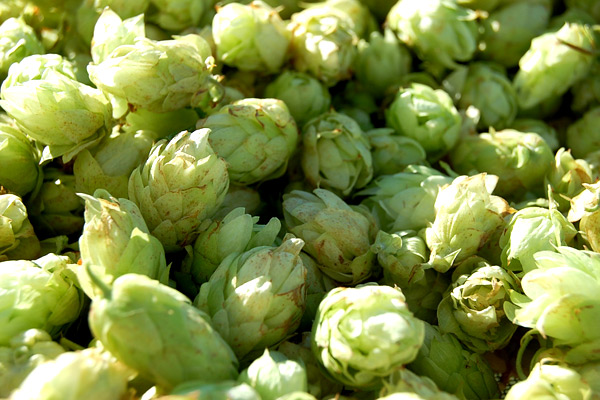How to: Grow Hops in Your Flat
Hops is the plant that is used to flavour beer. Hops is also the closest relative of the cannabis plant, and many of the techniques developed for growing cannabis indoors can be applied to the hops plant. Using the instructions below you will be able to grow your own hops plant in your flat and save money by not having to spend money on your favourite intoxicating substance.
What you will need
High Intensity Discharge (HID) grow lamp
Comes in “metal halide”, “high pressure sodium” or “LED”, but most important is that it is an HID and not just a run-of-the-mill lightbulb or flourescent tube as these will not produce enough light to allow the flowers of the plant which contain the flavour chemicals to mature properly. The staff at Switched On Gardener (SOG) are very experienced in helping choose an HID.
Secure area in which to grow
Indoor growing with an HID will produce lots of excess light, heat, humidity and odour. You need to find a place where these by-products will be safely contained and masked from random visitors or passers-by, otherwise people might get the wrong idea that you are growing cannabis which could be awkward. A well-ventilated wardrobe that keeps out light when shut should do the job, and you can attach a “carbon filter” to the ventilation exhaust to control odour (also available from SOG).
Pots to put the plants in and potting soil to fill them
This is straightforward, but remember that the pots must fit inside the growing area, and they will need some sort of tray under them to catch the water that runs out. Also the pots will need to be large enough. A rule of thumb is roughly 4 litres of soil for every foot of the plant’s final height, so think about how tall your plants will be at the end (see below*). Any old potting mix will do, but remember that you get out what you put in, so an expensive potting mix can sometimes be worthwhile. Also you can mix in things like “perlite”, sand and “vermiculite” to make the soil fluffier and hold more water, and/or things like horse, sheep and seabird manure to add nutrients (but don’t overdo it, sometimes less is more).
Water and fertiliser
You will need two different types of fertiliser as the hops plant, like its cannabis cousin, has two distict phases of growth (see below*). Fertiliser comes with three numbers on the front (e.g. 1-5-1) representing N-P-K (Nitrogen, Phosphorus and Potassium). Early in the plant’s life you will need a fertiliser with high nitrogen (bigger first number) for growth. Later, when the plant starts producing flowers, you will need a “flower and fruit” fertiliser with higher phosphorus and potassium (bigger second and third numbers). Both types can be found at any garden centre, and SOG has an even wider range.
An appliance timer to plug the light into
an oscillating pedestal fan
Important Fact
Hops, like cannabis, has separate male and female plants, but only the female flowers produce the flavourful chemicals that are sought after, so you only want to grow female plants. This can be achieved by getting known female plants from a friend or shop, or by simply removing males grown from seed once they show their sex (see below*).
Start
Germinate a seed and grow it on a sunny windowsill until the plant is about 10-15cm, or alternatively get an already-growing plant. Mix your soil if you are adding anything to it and then fill the pots and plant your plants in the soil. Place the potted plants on the trays in the growing area.
All the important shit
There are two stages of growth, vegetative and flowering. Flowering is induced by a change in the length of day. When the plants receive less than 12 hours of light in a day they begin to flower, and depending on the variety of hops they take about 8 weeks from the beginning of flowering to finish maturing. Use the appliance timer to keep the light on for 18 hours/day in the first few weeks of the plant’s growth. When you decide it is time to start flowering, simply change the timer to keep the light on for 11 hours/day. Keep in mind that the plants generally double their height during the flowering period so a good way to decide when to switch the light cycle is when they are half the height you want them to be at the end, or alternatively 8 weeks before you want to harvest them. About two weeks after switching the light cycle the plants will start to show their flowers indicating which sex they are; this is the time to cut down any male plants. You will know female plants because their flowers are made up of a cluster of sticky little hairs, the flowers of male plants first appear as little pods or balls and open up to reveal a traditional flower shape with five petals and pollen bearing anthers. Cut the males down when the flowers are still balls and the pollen hasn’t been released yet.
This article first appeared in
Issue 3, 2012.
Posted 6:37pm Sunday 11th March 2012 by
Staff Reporter.



